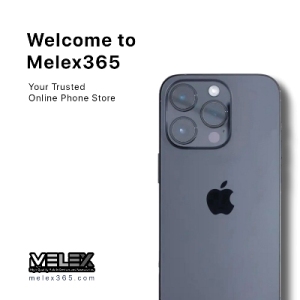In recent years, the smartphone industry has witnessed a quiet yet transformative revolution in battery technology. Silicon-carbon batteries have emerged as a formidable successor to traditional lithium-ion batteries, promising enhanced energy density, longer lifespan, and faster charging capabilities. This article delves into the intricacies of silicon-carbon batteries, their advantages, challenges, and the implications for the future of smartphones.
Understanding Silicon-Carbon Battery Technology
Traditional lithium-ion batteries utilize a graphite anode. In contrast, silicon-carbon batteries replace or supplement this with a silicon-based anode. Silicon’s theoretical capacity to hold lithium ions is significantly higher than that of graphite, making it an attractive alternative for enhancing battery performance. However, silicon expands and contracts substantially during charge-discharge cycles, leading to potential structural degradation. To mitigate this, combining silicon with carbon materials provides mechanical stability and improved electrical conductivity, resulting in a more robust and efficient battery.
Advantages of Silicon-Carbon Batteries in Smartphones
Enhanced Energy Density
Silicon-carbon batteries offer a higher energy density compared to their lithium-ion counterparts. This means that for the same physical size, a silicon-carbon battery can store more energy, leading to longer usage times for smartphones without increasing device dimensions.
Faster Charging Times
The improved conductivity and ion exchange efficiency of silicon-carbon batteries facilitate quicker charging. Users can achieve substantial battery levels in shorter periods, enhancing the convenience of smartphone usage.
Extended Battery Lifespan
By effectively managing the volumetric changes of silicon during charge cycles, silicon-carbon batteries exhibit reduced degradation over time. This results in a longer lifespan, ensuring that smartphones maintain optimal performance throughout their usage period.
Challenges in Silicon-Carbon Battery Implementation
Structural Integrity
The significant expansion and contraction of silicon during charging and discharging pose challenges to the structural integrity of the battery. Ongoing research focuses on developing composites and nanostructures that can withstand these changes without compromising performance.
Manufacturing Costs
Integrating silicon into battery anodes introduces complexities in the manufacturing process, potentially increasing production costs. Economies of scale and advancements in fabrication techniques are essential to make silicon-carbon batteries a cost-effective solution for mainstream smartphones.
Current Applications in the Smartphone Industry
Several smartphone manufacturers have begun incorporating silicon-carbon battery technology into their devices, signaling a shift towards this advanced power solution.
Case Study: HONOR Magic 6 Pro
The HONOR Magic 6 Pro features a silicon-carbon battery with a capacity of 5,600mAh, offering extended usage times and faster charging capabilities compared to its predecessors.
Emerging Trends
Other manufacturers, including Xiaomi and Vivo, have announced smartphones utilizing silicon-carbon batteries, indicating a broader industry adoption of this technology.
The evolution of silicon-carbon batteries is poised to bring about significant advancements in smartphone design and functionality.
Thinner and Lighter Devices
The increased energy density allows for slimmer battery designs, enabling the development of thinner and lighter smartphones without compromising battery life.
Integration with Wearable Technology
Beyond smartphones, silicon-carbon batteries hold promise for wearable devices, offering longer battery life in compact forms, which is crucial for user convenience and device aesthetics.
Samsung and Apple’s Strategic Initiatives
Reports suggest that Samsung is actively engaged in the development of Si-C battery materials, aiming to surpass the 5,000mAh capacity threshold present in its flagship models.
Apple, known for its cautious approach to adopting new technologies, is also rumored to be exploring Si-C batteries, although a clear timeline for implementation remains undisclosed.
Future Implications for the Smartphone Industry
The transition to Si-C battery technology by leading manufacturers like Samsung and Apple could set a new industry standard, prompting widespread adoption and further advancements in battery performance. This shift holds the potential to revolutionize user experiences by offering longer battery life, faster charging, and more sustainable devices.
Conclusion
Silicon-carbon battery technology represents a pivotal advancement in the quest for more efficient, durable, and faster-charging power sources for smartphones. While challenges remain in terms of structural integrity and manufacturing costs, ongoing research and industry adoption suggest a promising future. As this technology matures, users can anticipate smartphones that not only last longer on a single charge but also contribute to the development of sleeker and more versatile electronic devices.

Phonebulance is your one-stop center!
Want to get the most out of your iPhone? At Phonebulance, we’re your one-stop center for all things smartphone! Whether you’ve cracked your screen, dropped it in water, or it’s simply acting sluggish, our certified technicians can diagnose and fix a wide range of issues. Contact us today or make an online appointment to learn more about our services and keep your smartphone connected and functioning like new!
Here is the list of our smartphone repair services:
- Apple iPhone
- Apple Watch
- Apple iPad
- Apple iPod
- Samsung Galaxy S Series
- Samsung Galaxy Note Series
Samsung Galaxy Tab - Google Pixel and Nexus
- OnePlus
- Other brands (LG, Motorola, HTC, Blackberry…)
Here is the list of our repair and fixing prices:
- iPhone LCD Screen Replacement
- iPhone Charging Port Replacement
- iPhone Battery Replacement (High Capacity)
- iPad screen replacement
- iPhone Back Camera Lens Replacement
- iPhone Rear Camera Repair
- iPhone Back Glass Repair Cost
Service Areas in Orange County South:
- iPhone Repair Orange County
- iPhone Repair Laguna Niguel
- iPhone Repair Laguna Beach
- iPhone Repair Dana Point
- iPhone Repair San Juan Capistrano
- iPhone Repair Mission Viejo
- iPhone Repair San Clemente
- iPhone Repair Rancho Santa Margarita
- iPhone Repair Irvine


0 Comments